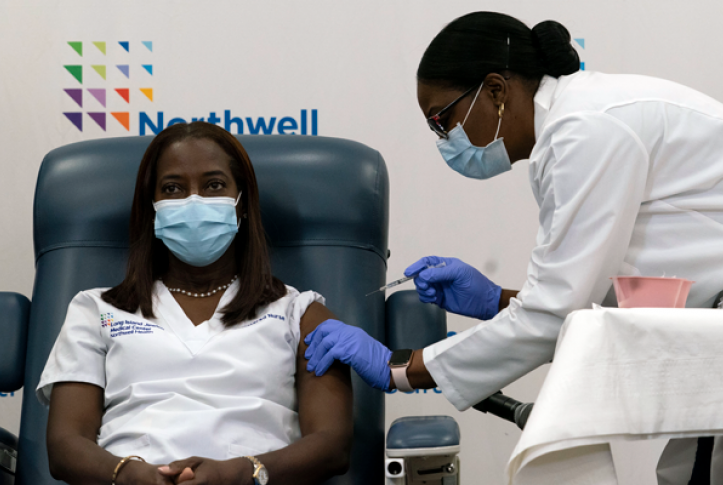Through Operation Warp Speed, the U.S. government invested more than $18 billion in the rapid development and nationwide distribution of COVID-19 vaccines that will help us emerge from the pandemic. But alongside this federal effort, success also will depend on state governments and local public health partners getting the vaccine into the arms of hundreds of millions of people across the country. The publicity surrounding the shipments of the first doses could create the impression that logistics are under control, but this is not the case. Unless Congress includes public health aid to states in its long-delayed COVID recovery bill to support this campaign, it will likely fall short. With COVID-19 now the leading cause of death in the United States, we cannot afford that.
Although state and local public health agencies are generally responsible for the “last mile” of vaccinations, the scale and timeline of this campaign is especially challenging after the strains of months of emergency pandemic response. The Duke–Margolis Center for Health Policy, in partnership with the National Governors Association and the COVID Collaborative, published an analysis of state and territorial vaccination plans. The report found that state public health leaders have estimated they need $8.4 billion in additional federal funds to support the workforce, equipment, data systems, and communications efforts required to oversee an effective and equitable vaccine roll-out. To date, states have only received $200 million specifically allocated for these efforts.
Funding will be critical as states set up cold storage systems, public education and partnership initiatives, arrangements for local vaccine administration with diverse populations and conditions, transport to move the vaccine to the points of administration required to reach all Americans, and information systems to track who has received particular vaccines, and critically, to make sure recipients return for required second doses. To help ensure that vaccines can be safely transported and administered, states are considering mobilizing the National Guard and partnering with pharmacists and other untraditional providers, like dentists and medical students. These activities require substantial funding and resources that are not available in the midst of collapsing state revenues and intense demands for tracking the course of the pandemic and pursuing testing and containment activities.
In addition, there is a long history of limited attention and support for state public health capacity that has contributed to repeated shortfalls in immunizing populations against common infectious threats. A recent study showed that in 2019, no state immunized more than 51 percent of its adult population against influenza, well below the level needed for preventing significant outbreaks. Some states fell below 40 percent; this includes states where COVID-19 infection rates are now among the highest in the country. Routine influenza immunization may not fully predict how successfully a COVID-19 vaccine will be administered, but it should be noted that the same low immunization rates were observed in 2009–2010, during the much-feared and highly publicized H1N1 influenza epidemic.
Furthermore, states consistently show poorer adult immunization rates for Black and Hispanic people, who are dying from COVID-19 complications at nearly three times the rate of white people. On average, influenza immunization rates for these groups are 10 percent to 13 percent below white populations. In some states and jurisdictions, gaps for Black people are as high as 25 percent and for Latinos, 23 percent. Promoting equity in the COVID-19 vaccine campaign will require investment and resources for community health organizations that can reach critical populations, as well as communication and engagement to address historic mistrust of public health authorities. This outreach will help overcome skepticism about COVID-19 vaccination; as many as 42 percent of respondents in some recent polls have said they would not take a COVID-19 shot.
The United States now stands on the threshold of a scientific and public health triumph; safe and effective vaccines have been developed, tested, and manufactured at record speed. The critical path to ending the public health emergency now moves to on-the-ground vaccination. Failing to provide the funds that state and local governments need now puts vaccination success at risk, which would be a true national tragedy.




